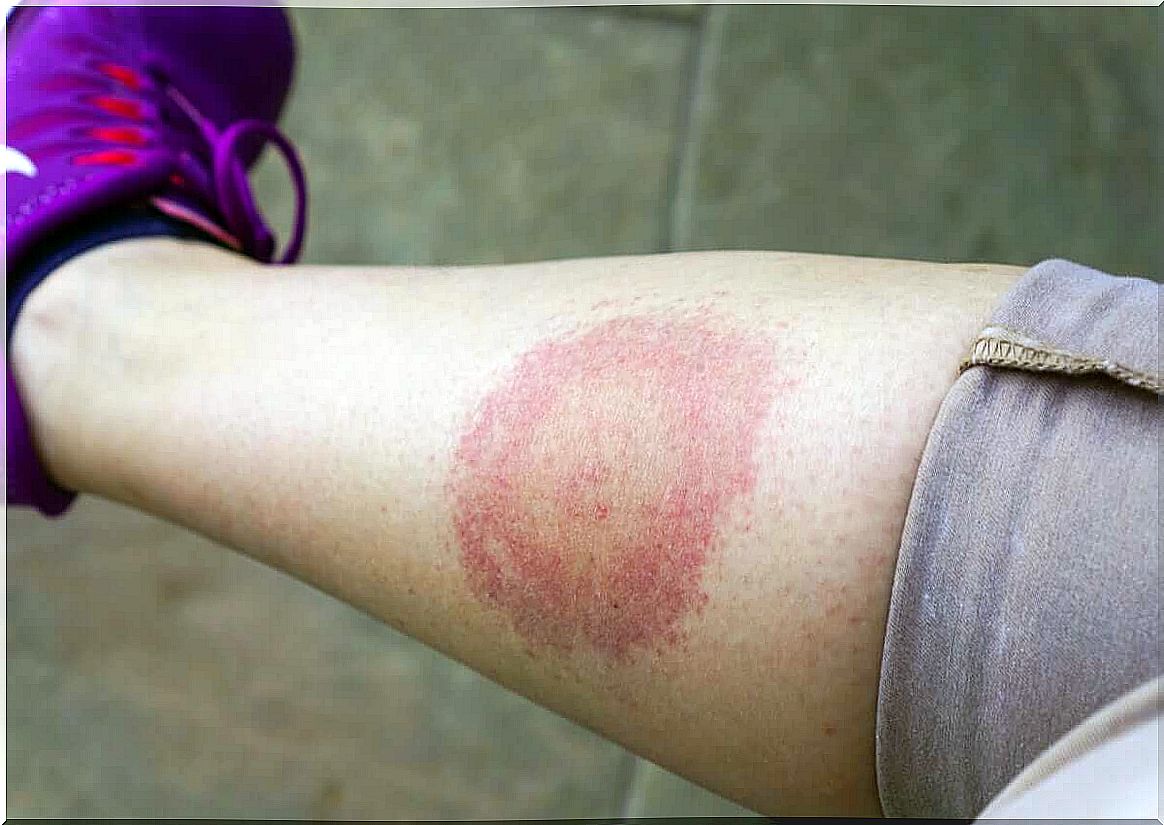How Is Lyme Disease Treated?
Lyme disease initially only leads to erythema. However, if not treated properly, serious complications can arise. Find out more about this topic today.

The treatment of Lyme disease is essential in order to avoid complications, and also an important step forward, as this disease was only recognized 1975th It is an infection with the bacterium Borrelia burgdorferi or related Borrelia, which are transmitted by ticks.
An infection with Lyme disease only occurs when there is contact with these arthropods. The danger is therefore greater in areas with many fields and forests. However, not all ticks are infected with these bacteria.
However, if infection does occur, serious neurological complications can ensue unless prompt treatment is provided. The drugs that are used in this case vary depending on age and the course of the disease. Learn more about this disease and the different treatment options today.
Lyme Disease: What Is It?
Before we talk about the treatment options, let’s briefly explain the key data about this disease. As mentioned earlier, it is a bacterial infection that is transmitted by ticks.
After the tick bite, a typical reddening of the skin develops around the affected area. It is sharply demarcated and reaches a diameter of at least five centimeters. One also speaks of wandering redness (Erythema migrans). This redness doesn’t cause itching.
Many patients also feel unwell, have a fever and headache. The problem with this disease is that complications can arise even years later, even after the clinical manifestations have long been resolved.

Lyme disease: treatment options
Treatment of Lyme disease must be quick to prevent the complications mentioned. Since it is a bacterial infection, antibiotics are used.
The therapy and the result depend on the severity of the disease and how quickly the diagnosis is made. An article in the Acta de Medicina Colombiana confirms that treatment at an advanced stage is far more difficult than at the initial stage, which also affects the result.
Treatment of early Lyme disease
Treatment in late stages or serious cases
When the diagnosis is late and the injuries have progressed, other medicines are used. Most often, doctors prescribe doxycycline in this case. However, this drug must be injected intravenously or used for a longer period of time because the body tissues are already infected and the bacteria are replicating.
This is also the case when there are complications, especially in the central nervous system. As mentioned before, hemiplegia or meningitis (meningitis) can occur. Even then, intravenous antibiotics are necessary.
The most commonly used drugs in this case are cephalosporins. The prognosis is good, but treatment must still be given as soon as possible. Symptoms can persist even if therapy is successful.

In a nutshell: early treatment to prevent complications
Lyme disease must be treated as quickly as possible, otherwise the risk of neurological or articular complications is high. Antibiotics are used for treatment.
If the infection is diagnosed early and the manifestations are mild, in most cases the attending physician will administer oral doxycycline. However, penicillin (for example amoxicillin) is better for children and pregnant women. With a late diagnosis , intravenous administration of antibiotics is required.
As always, the most important thing is prevention so that there is no infection in the first place. You should avoid areas with ticks as much as possible or protect yourself appropriately. Simple precautionary measures can reduce the risk of infection.









